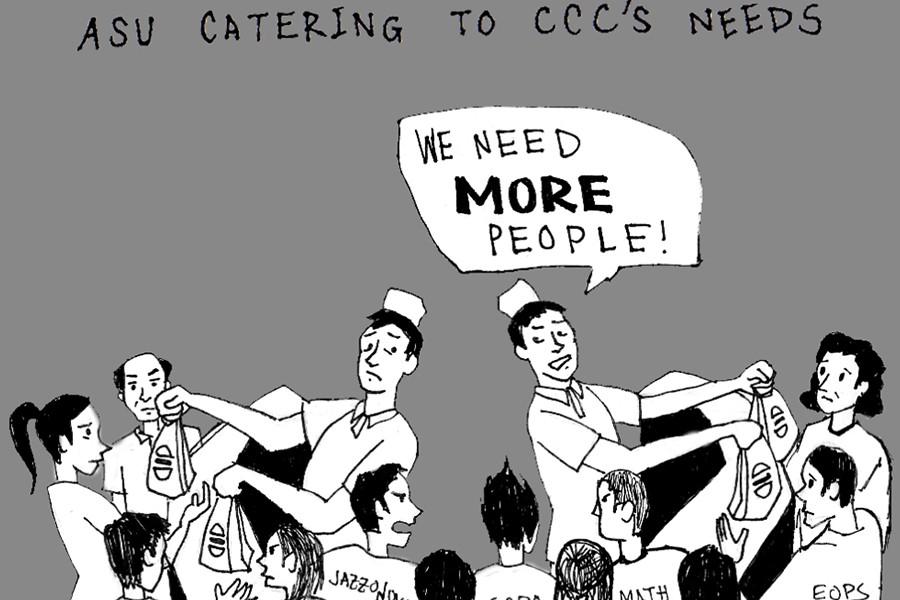Recruitment foils program
ASU Grant for Support needs student involvement to thrive
Dec 9, 2015
If the Associated Students Union is not going to take steps to abolish the $5 Student Activity Fee, then it should recruit more people to ensure student generated revenue is used effectively with its Grant for Support program.
The ASU needs to boost its online and campus recruiting so it will have enough members for the board to properly review and process Grant for Support applications next time.
As of press time Tuesday, the ASU has nine board members. At its last meeting on Dec. 2, only half of those members showed up, barely making a quorum, while former ASU Director of Training and Recruitment Luana Waters has only attended two meetings since she took a paid interim position in the Dean of Student Services Office on Oct. 1.
One such leading example of how the shortage of board members involved has affected the ASU’s operations is the approval of nine Grant for Support applicants out of a possible 10.
While The Advocate applauds the Finance Committee, comprised of Chairperson Jun Chen and ASU Vice President of Club Affairs Safi Ward-Davis, for screening all 19 applicants for the semester and contacting representatives promptly, having such a small committee is counter intuitive to the inclusive-decision making the ASU claims to exemplify.
Screening these applications will become even more difficult as Ward-Davis said she will be stepping away from her position with the ASU.
Current Director of Press Relations Richa Dahal will have to ensure that she follows through with the social media revamp if the ASU hopes to have a large staff, skilled enough to handle a larger influx of applications quickly and fairly.
This could become especially key as the funds that are used to fund the Grant for Support program are charged to every student at the start of every semester.
According to Chen, the Grant for Support program can only approve applicants for up to $2,500 in additional funding for campus events or purchases that are not covered by institutional costs, but would benefit a large portion of students.
With the reinstatement of the program this semester the ASU Finance Committee re-worded the old application to only allow up to 10 applicants to receive funding per semester — and a total of $10,000 less to spend.
But now the time frame has closed for applying, leaving seven applicants requests on hold until next semester.
Presently, the ASU board has nine members but with half of them missing at various meetings, how does it expect to make an inclusive and fair decision that reflects the interests of Contra Costa College’s 6,500 students?
While it is not an easy task, The Advocate encourages the ASU to boost its recruitment as it is the only way it can maximize its efficiency. Added recruitment would ensure that future applications are handled diligently and carefully considered — instead of rushed.


